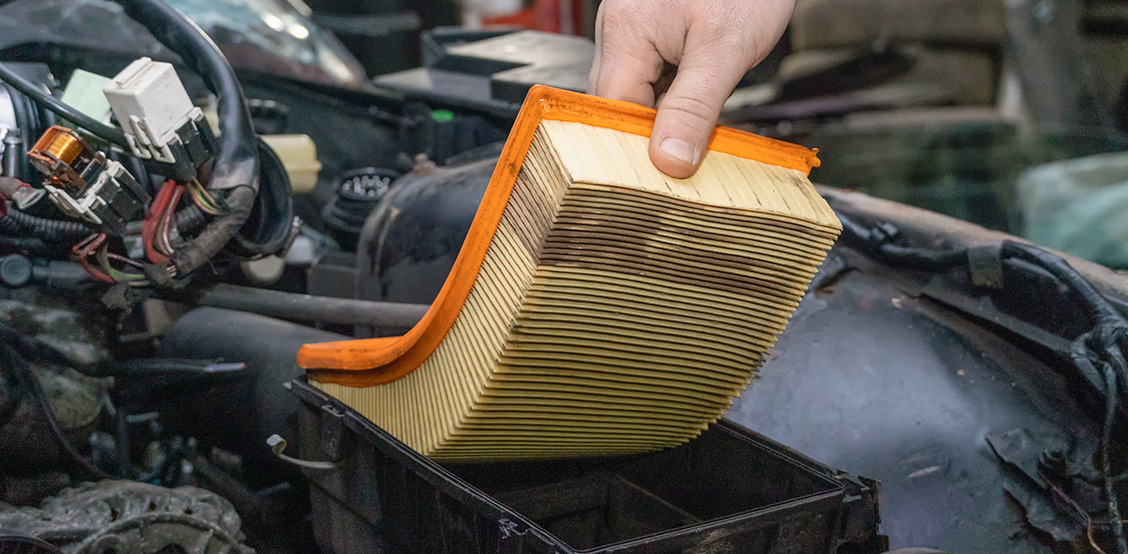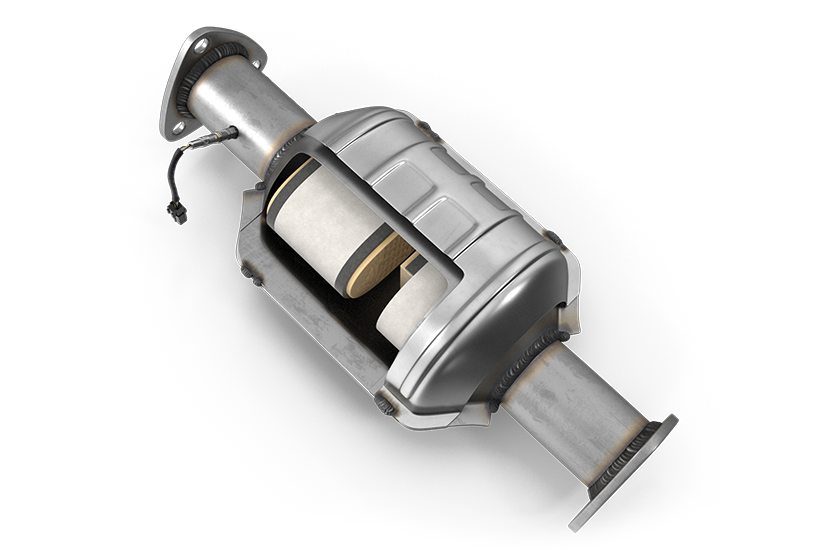DPF self-cleaner as a cost-effective solution for DPF cleaning?


In our last articles you can already inform yourself in detail about what a DPF is, how it works and also ultimately clogs at all. So, especially with predominant trips in the city and short-distance traffic, it does not remain out of the question that the soot particle filter (DPF) clogs sooner or later.
In this article, we will explain how and how you can recognize a clogged diesel particulate filter – and what you, as a driver of a diesel vehicle, must pay attention to when you unclog or unblock your particulate filter.
Even if the soot filter is regenerated correctly, it cannot be avoided in the long term that more and more ash is deposited in it over time. At the latest when a certain value is reached, cleaning (or even costly replacement) is necessary. In the process, the regeneration intervals become shorter and shorter until finally the indicator lamp lights up, signaling that independent regeneration is no longer possible – and the engine finally switches to emergency operation (emergency mode).
As a driver of a diesel vehicle, you must therefore ensure that the DPF is regularly serviced. Because: At the latest when the DPF is clogged with ash, even the manual initiation of filter regeneration (for example in the workshop) is no longer successful. The service life of the particulate filter ultimately depends on the driving style, the area of application, the mileage and also the engine oil used.
While specific intervals for replacing the particulate filter were still specified, especially for older models, it is now more common to make the replacement of the soot filter dependent on the respective ash content – this can be determined during an inspection, among other things.
But how can you recognize a clogged diesel particulate filter?
It’s not that easy: to identify a clogged DPF, you first have to distinguish between regulated and unregulated systems. While a warning light lights up in the case of the regulated, standard filters, there are no warning signals at all in the case of the unregulated – mostly retrofitted – DPFs that indicate a clogged DPF.
However, some suppliers of so-called retrofit filters repeatedly state that such filters can no longer clog because they regenerate independently at temperatures as low as 200 degrees, which prevents the filter from clogging in the first place – but this is not the case in everyday use.
A full DPF is nevertheless noticeable in any case. One of the most common consequences (and by far not the worst) is an acute loss of engine power.
As a driver of a diesel vehicle, what do you have to watch out for to prevent the particulate filter from clogging up – and to keep it intact in the long term?
When we drive a car, the pores of the particulate filter gradually become clogged. This creates a layer of soot on the surface and in the honeycombs of the filter -: this is known as ‘filter cake’.
When the automatic DPF regeneration is started, this soot layer should eventually be burned to ash, thus cleaning or ‘burning free’ the particulate filter. In closed-loop systems, this process is initiated via the engine control unit and runs unnoticed by the driver.
However, temperatures of 500 to 600 degrees are required for regeneration. Only then can regeneration start – and the filter be burned free. In city traffic, however, vehicles rarely reach such temperatures. Instead, diesel vehicles only reach 200 degrees, which means that regeneration often fails to take place for a long time. As a result, the diesel particulate filter becomes increasingly clogged with the moist, sticky soot over time, leading to increased exhaust backpressure, which ultimately results in a loss of power.
According to TÜV experts, a vehicle is mainly used in city traffic when it is driven about 200 kilometers in succession in urban areas. Tests on the test bench have shown that the filters are often already loaded at this point – so that regeneration is initiated. However, there is only limited clear evidence of a clogged DPF here.
Even with the greatest care and attention, it is still possible for the soot filter to become clogged over time.
Eventually, there is no other choice and cleaning (or in the worst case, even replacement of the DPF) becomes unavoidable. The rules for refreshing the diesel particulate filter are prescribed individually by the respective manufacturers. As a driver of a diesel vehicle, you should therefore ideally find out about the diesel particulate filter integrated in the vehicle in the owner’s manual immediately after purchase.
If the particle filter of your car is clogged, we recommend cleaning in any case, compared to the costly purchase of a new soot filter. When cleaning particulate filters, we make use of a thermal-mechanical process, which enables us to remove almost all soot and ash from soot filters within 1-3 working days. After our gentle cleaning, the filter has the properties of a new filter – and is then once again capable of reliably reducing particulate emissions.
Again and again we are asked by our customers: whether it is possible to drive with a clogged particulate filter? Although driving with a clogged particulate filter is possible, it is just as problematic!
If the warning light has only come on for a short time, it is still possible to drive for a short time with a loaded soot filter. Long-term vehicle damage cannot be ruled out here either, but is not to be expected.
If the filter is completely clogged, however, you should not move the vehicle under any circumstances. The engine can suffer serious damage, and also from an environmental point of view, we can only advise against driving with a clogged DPF.
In any case, we recommend that you have the DPF checked / read out regularly – and if necessary, we will be happy to clean it for you!
As more and more particles are deposited in the filter over time, they are burned off (more or less regularly) by the exhaust gas temperature / self-regeneration – the so-called particulate filter regeneration. How the soot filter regeneration ultimately works always depends on the system used – whereby a distinction is made between active and passive regeneration. However, this system varies from manufacturer to manufacturer.
It is not uncommon for both options for soot filter regeneration to be integrated. There are also options for lowering the soot ignition temperature by using additives, among other things, so that combustion of the particles is possible at temperatures as low as 400 degrees. It should be noted, however, that the additives burn in the engine, leaving additional ash in the filter.
The different types of particulate filter regeneration are described below, and you will also learn what you need to bear in mind if you want to clear your particulate filter.
Passive regeneration takes place at regular intervals – whenever the required exhaust gas temperature is reached. Active regeneration occurs in particular during predominantly highway or full-load operation. The so-called particulate filter clearance is an example of such a passive DPF regeneration.
Active regeneration of the particulate filter, on the other hand, is achieved by increasing the exhaust gas temperature to around 600 degrees Celsius, and by changing the number and timing of injections.
As already mentioned, long-term short-distance operation of the vehicle can impair soot filter regeneration. As a result, the filter becomes increasingly clogged and may even be damaged.
This is remedied by the engine control lamp, which lights up when the exhaust backpressure reaches a certain limit. If you now take a look at the respective operating instructions for the car, you will usually be advised to make a regeneration drive with increased load – the colloquial “free run” (of the particulate filter). When driving free of the particulate filter, the moist soot clogging the honeycombs is burned to fine ash, so that the exhaust gases can flow through the filter again. Often, however, only part of the soot is burned off and the warning light comes on again after a short time. Even with optimal regeneration and driving behavior, the filter will eventually become clogged with ash, which remains in the filter as the end product of soot combustion.
If the particulate filter is clogged due to predominant use in city traffic, free driving on highways or country roads can remedy the situation. The TÜV repeatedly advises consumers to follow the manufacturer’s instructions for free driving and not to blindly follow any recommendations from their own friends. After all, if you want to free the particulate filter, you should follow the existing regulations.
In addition, some manufacturers require customers to visit a workshop and then reset the fault memory. On the other hand, a widespread car myth is that to clear the diesel particulate filter, it is sufficient to “simply speed down the highway at full throttle”.
If you want to reliably regenerate your own particulate filter, it is much more advisable to drive the vehicle over a longer distance at medium engine speeds (on the highway or country road). So to start the automatic regeneration (cleaning) of your particulate filter, all you have to do is drive a longer distance at a relaxed, steady pace – while it’s better to use your bike for short trips in the city center instead.
As has already been made clear in many places, an intact diesel particulate filter is an important tool for people, the environment and the car. To ensure that your DPF really works, you should have it serviced or cleaned regularly. We will be happy to support you in this!
Likewise, in addition to regular cleaning, you should take further measures and regularly clear the soot particle filter.
Sometimes (especially when driving short distances) it is also better to simply leave the car alone – and thus protect the soot filter as well as the environment.
As a driver of a diesel vehicle, it is therefore important not to put unnecessary strain on the DPF and to ensure its proper operation through regular maintenance or cleaning.
Even though it may seem at first glance that you have to pay attention to a number of things as a driver of a diesel vehicle, it is still worthwhile to consciously take care of the diesel particulate filter when driving. Think of DPF protection measures – such as continuous DPF clearing, maintenance and cleaning – more as continuous care of the diesel particulate filter, rather than as obligations resulting from the use of a DPF.
After all, regular DPF cleaning saves you money, protects your car’s engine and also protects the environment! So a soot filter is anything but a burden!
